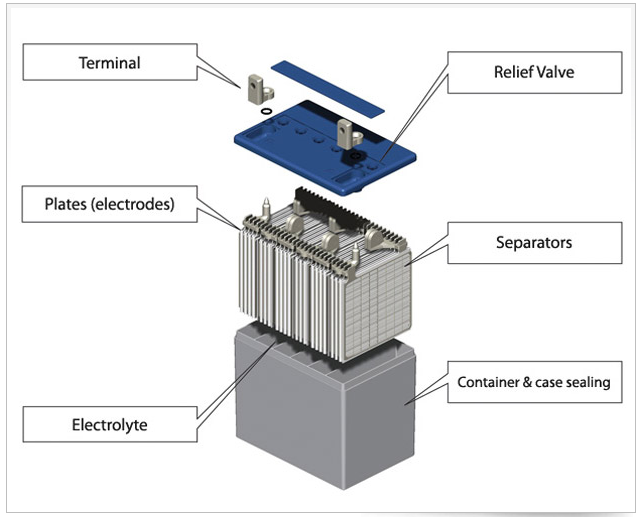FAQs
Lead Acid Battery
SLA (sealed lead acid), also known as VRLA (valve regulated lead acid) batteries are rechargeable with a nominal voltage of 2 volts per cell. Require a float voltage under charge of 2.4 to 2.45 volts per cell (ex. 12 volt battery 14.4 to 14.7 volts). The amount of current the battery can take under charge is largely dependent on the capacity of the cells. Most use a 20 hour discharge to determine their rated capacity. The actual capacity is influenced by the discharge rate and voltage cutoff. Lead Acid Batteries do not develop "memory" in cyclic applications and should be kept fully charged when not in use. Top charge after 6-9 months in storage. They are constructed using an AGM (absorbed glass mat) design or GEL. AGM batteries have a separator holding the electrolyte made of glass fiber that behaves like a sponge.
AGM batteries have a separator holding the electrolyte made of glass fiber that behaves like a sponge.
Better high rate and low temperature performance.
Faster recombination, lower resistance separator.
Can be installed in any orientation.
Lighter than the GEL construction.
GEL batteries are designed with fine silica particles with a large surface area and are dispersed in the electrolyte.
Accept a lower float voltage than AGM.
Typically provide superior cycle life.
FLOODED lead acid batteries contain a liquid electrolyte.
